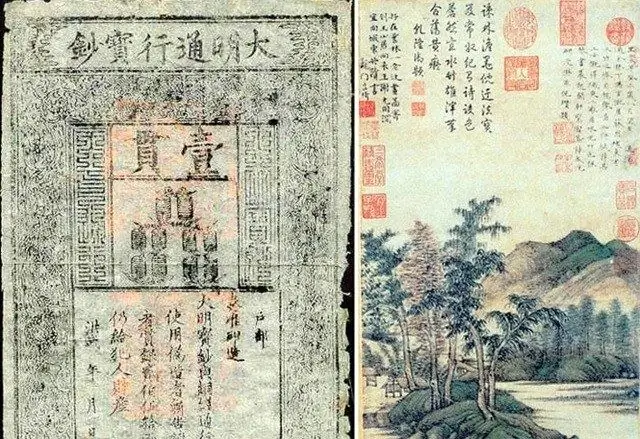- Author Antonio Harrison [email protected].
- Public 2023-12-16 07:44.
- Last modified 2025-01-22 21:44.
Paper was invented in China, and it is not surprising that the Chinese were the first to use paper money. They first appeared in the 9th century AD, but no banknotes have survived since that time. The oldest paper note found dates back to 1380. In Europe, printing money began later - in 1661.

History of money in China
About two thousand years ago, the Chinese were the first in the world to make real paper. But they did not immediately figure out how to make paper money; for a long time, coins were in use, as in the whole world. Around 800 AD, the first money appeared on small sheets of paper with specific signs. These were not the usual banknotes in the modern sense: the authorities of the empire issued them to some trading houses as certificates of deposits that could be exchanged for gold, silver and copper coins.
These sheets of paper with seals that protected against counterfeiting could be transferred to others. Gradually, they became a common means of payment, but were rarely used. As long as there was enough metal, there was no need for such banknotes, but they existed for a long time along with coins.
When copper became scarce in central China's Sichuan province, the authorities decided to start issuing paper money. The merchants liked this reform - it was hard for them to carry bags of coins with them, and the paper weighed almost nothing. But the mass production of money soon led to inflation, the situation in the country was aggravated by the wars with the Mongols. The population trusted paper less and less, and soon the banknotes disappeared.
Travelers from Europe who visited the Celestial Empire were impressed by this money, Marco Polo wrote that it reminds him of the alchemical formulas for converting base metals into gold.
After that, there were attempts to return the money out of paper: they entered circulation, but quickly became unnecessary. For example, banknotes began to be issued in the middle of the 14th century. From those times to the present day, a sheet of paper with hieroglyphs, seals and drawings has been preserved - this is the oldest paper banknote dated 1380. It depicts a painting by the famous Chinese artist Ni Zan at that time.
By 1500, the issue of paper money in China stopped, and only resumed in the 19th century due to European influence.
The first paper money in other countries
After conquering China in the 13th century, the Mongols began to distribute paper money to the countries of the Middle East. In 1661, the first banknotes appeared in Sweden, they were printed in small quantities in Stockholm, but after four years they were removed from circulation. In America, the first paper money appeared at the end of the 17th century in the Colony of Massachusetts. In Russia, banknotes appeared during the reign of Catherine II.






